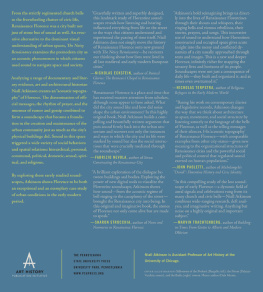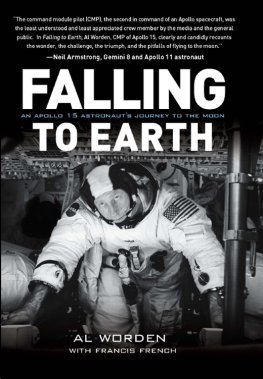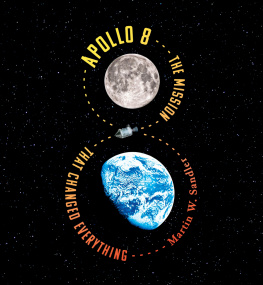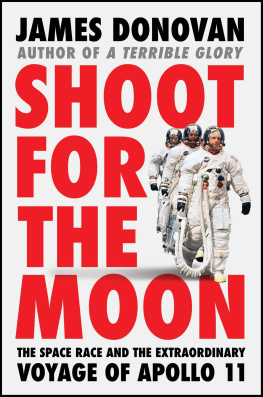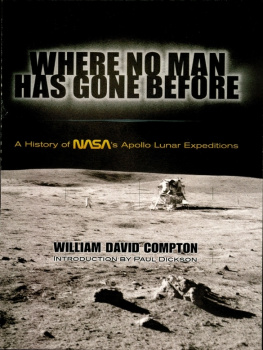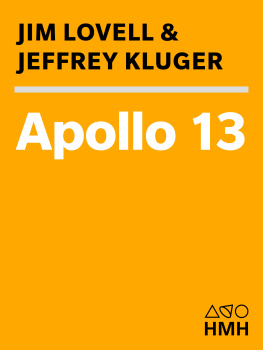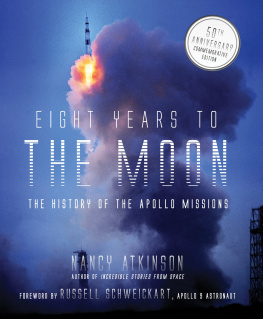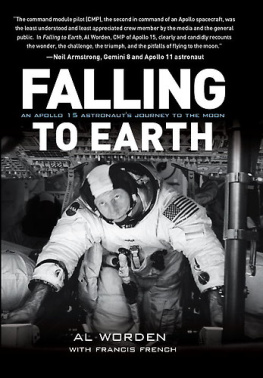Contents
Guide
EIGHT YEARS TO
THE MOON
THE HISTORY OF THE APOLLO MISSIONS
NANCY ATKINSON
AUTHOR OF INCREDIBLE STORIES FROM SPACE
FOREWORD BY RUSSELL SCHWEICKART , APOLLO 9 ASTRONAUT

The author and publisher have provided this e-book to you for your personal use only. You may not make this e-book publicly available in any way. Copyright infringement is against the law. If you believe the copy of this e-book you are reading infringes on the authors copyright, please notify the publisher at: http://us.macmillanusa.com/piracy.
TO RICK

The Apollo 9 Command Module in Earth orbit. Credit: NASA.
BY RUSSELL RUSTY SCHWEICKART
Im a big-picture kind of guy. Since Ive had many opportunities recently to reflect on the Apollo programnow that 50 years have gone bythere is one big-picture aspect of those days in the 1960s and early 70s that clearly stands out for me; to wit, the existential meaning of Apollo. What Apollo really gave us was a different perspective on the human condition.
The key moment for me was Apollo 8 in 1968. As the crew flew towards the Moon, they watched the Earth get smaller and smaller as it occasionally drifted through their windows. But their mission objective was to focus on the Moon. So when they went into lunar orbit, thats what they did. For their first three orbits they looked down at the Moon, studying the gray, cratered and lifeless lunar surface. As Bill Anders once said, You see a thousand craters and it starts to get boring; one crater starts to look like another.
On their fourth time coming around the Moon, Commander Frank Borman rolled the spacecraft around the vertical so that the windows faced towards the forward horizon. Suddenly, this beautiful blue and white ball rose up over the colorless Moon. The shock of what they saw, the beauty and wonder of this stunning blue and white planet, contrasting so starkly with the devastated surface of the Moon and the ultimate blackness of space made them realize the significance of life and of home.
While this happened for the first time to three people named Borman, Anders and Lovell, in reality, it happened to all of us. For me, that is the significant thing about Apollo: For the first time, we had the ability to understand the preciousness and uniqueness of life; to realize that we are the only life in this little corner of the universe. And now, after 50 years, weve come to understand that we can be an extremely strong and powerful influence on where the evolution of human life goes from here. But with power comes responsibility.
Less than three months later, during my own Apollo 9 mission, I had, by happenstance, a five-minute break while floating outside our Lunar Module. I proactively opted to step out of my astronaut role and fully take in where I was and what I was seeing. Uninvited, a flood of questions popped into my mind; How did I get here? Whats really going on here? Who am I? What does I mean? Am I I or am I us? These were not small questions and I wrestle with them still after 50 years.
So for me, here on its 50th anniversary, it is these personal experiences, gifted to a few lucky astronauts directly but to all of us in reality, that shape the historic significance of Apollo. That said, the other essential reality of Apollo is that it took over 400,000 people to make it possible to get to the Moon. For those of us who lived it day to day, we worked directly with perhaps a few handfuls of people, and we ended up meeting maybe a thousand or so others as we traveled across the country, visiting the sites where people were doing essential things for Apollo. But there were thousands of others who comprised this incredible tree of 400,000. Each and every person on that tree experienced a life-shaping, life-changing story of the dedication it took to make Apollo possible.
What Nancy Atkinson does with this book is pick up the behind-the-scenes details to bring home the fact that many real and ordinary people came together to do this amazing, extraordinary thing. Nancy shares their stories in a way that highlights how all these people were living and breathing the responsibility of contributing to humanitys dream to reach the stars. She makes this history more intimate, and shows us how everyone who worked on Apollo was an essential part of one small step for man, one giant leap for mankind. Its a moment that will never be repeated and should never be forgotten.
Im delighted Nancy decided to tell the Apollo story in this way. While the stories in Eight Years to the Moon are just a sampling of the 400,000 stories that are out there, this sampling comes at a deeper level that has not generally been heard, and provides an intuitive view of those who worked on the myriad bits and pieces of Apollo. Apollo was a tremendous collective experience of discovery and creativity and accomplishment. And thats a great story.
I am personally indebted and thankful to every one of those 400,000 people who each contributed, in their own way, not only to meeting JFKs goal of landing a man on the Moon and returning him safely to the Earth, but to having played a personal role in realizing this historic shift in humanitys understanding of its place in space and time.

SLEEPING ON THE MOON
NEIL ARMSTRONG AND BUZZ ALDRIN WOKE up on the Moon with two big problems.
Woke up, however, is perhaps a bit of an overstatement.
Neither astronaut was able to fall asleep after everything that had just happened. After all, it was a day of history-making and drama unlike any other: humankinds first landing on the Moon, our first foray on another world. And getting down to the lunar surface wasnt easy. The landing was fraught with communication problems, electrical glitches and navigation errors so great the Lunar Module (LM) overshot the intended landing site by more than four miles. Then Armstrong had to search for a new place to set down that wasnt filled with treacherous, LM-tipping boulders, manually flying the lander until it nearly ran out of fuel. All the while, jarring alarm klaxons sounded as the overloaded navigation computer struggled to process excessive data.
Finally, though, they landedsuccessfully. And all those in the Mission Control Operations Center (more commonly known simply as Mission Control) in Houston who had nearly turned blue from holding their breath started breathing again.
Be advised therere lots of smiling faces in this room, and all over the world, Capcom and fellow astronaut Charlie Duke radioed up to the crew on the Moon.
Well, there are two of them up here too, Armstrong replied.
And dont forget one in the command module! chimed in crewmate Mike Collins, orbiting above the Moon in the Columbia Command Module. Collins had also been holding his breath while listening in on the communications loopand holding a hopeful vigil in the crews ride back to Earth.


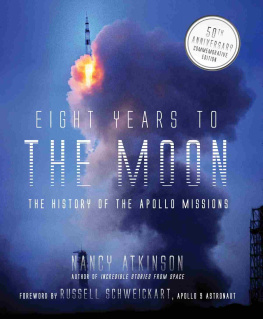


![Atkinson - An army at dawn: [the war in North Africa, 1942-1943]](/uploads/posts/book/178818/thumbs/atkinson-an-army-at-dawn-the-war-in-north.jpg)


